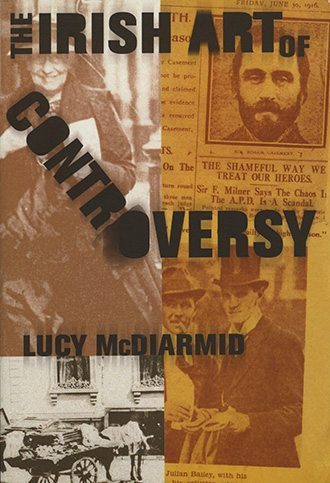
The Irish Art of Controversy
By: Lucy McDiarmid
Publication Date: 31 May 2005
€20.00
The Irish Art of Controversy by Lucy McDiarmid
North American customer should order from Cornell University Press.
Controversies are high drama: in them people speak lines as colourful and passionate as any recited on stage. In the years before 1916, public battles were fought in Ireland over French paintings, Dublin slum children, and theatrical censorship. Controversy was ‘popular,’ wrote George Moore, especially ‘when accompanied with the breaking of chairs’.
In her new book, Lucy McDiarmid gives a lively account of these and other controversies. They offered to everyone direct or vicarious involvement in public life: the question they articulated was not ‘Irish Ireland or English Ireland’ but whose ‘Irish Ireland’ would dominate when independence was finally achieved.
The Irish Art of Controversy recovers the histories of ‘the man who died for the language,’ Father O’Hickey, who defied the bishops in his fight for the Irish language; Lady Gregory and Bernard Shaw’s defence of the Abbey Theatre against Dublin Castle; the 1913 ‘Save the Dublin Kiddies’ campaign, in which priests attacked socialists over custody of Catholic children; and the contested Hugh Lane Bequest to Dublin of thirty-nine Impressionist masterpieces. Roger Casement forms the subject of the last chapter, which offers the definitive commentary on the long-lasting controversy over his diaries.
In its original treatment of what Yeats called ‘intemperate speech’, The Irish Art of Controversy suggests new ways of thinking about modern Ireland and about controversy’s bluff, bravado and improvisational flair.
‘The Irish Art of Controversy is what serious scholarship should be: meticulously informed, lucid, original. I enjoyed every page.’ – Samuel Hynes, Princeton University
‘Lucy McDiarmid brilliantly identifies five dramas of cultural change in Ireland in the years before independence, narrating them in all their complexity, tragedy, and comedy. Vividly original, written with verve, wit and meticulous scholarship, The Irish Art of Controversy will be essential reading for anyone who cares about the Irish history, literature, or politics of the last hundred years.’ – Angela Bourke
‘Lucy McDiarmid’s studies of Yeats and Lady Gregory have already established her among the most illuminating interpreters of the turbulent Ireland of a century ago. Here she casts further light on the period through her riveting account of five major controversies that excited that extraordinary generation.’ – J.J. Lee, New York University
‘A study that abounds in spirited, strong-willed, and stubborn smart meetings and maulings of the minds.’ – Customer review
ABOUT THE AUTHOR
LUCY MCDIARMID has a PhD from Harvard and is a writer and historian. Her book The Irish Art of Controversy was published by Lilliput in 2005.
| ISBN | 9781843510697 |
|---|
| Weight | 0.5 kg |
|---|---|
| Dimensions | 230 × 150 mm |
| Publication Date | 31 May 2005 |
| Format | Paperback, 304pp |
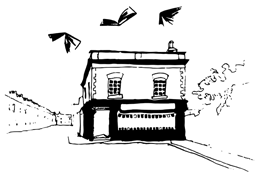
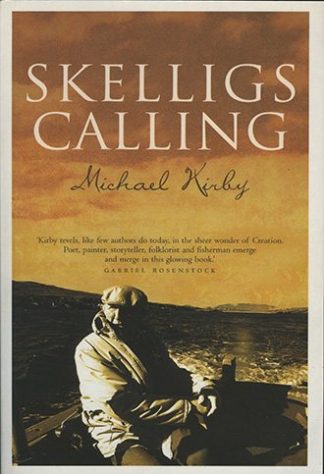
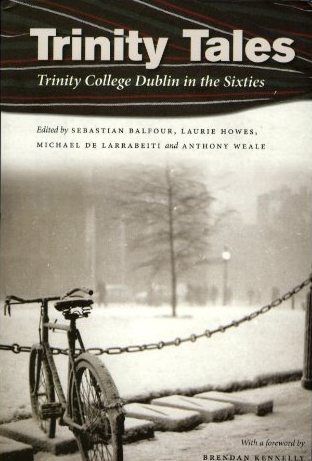
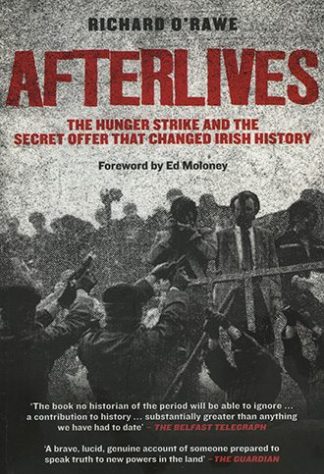
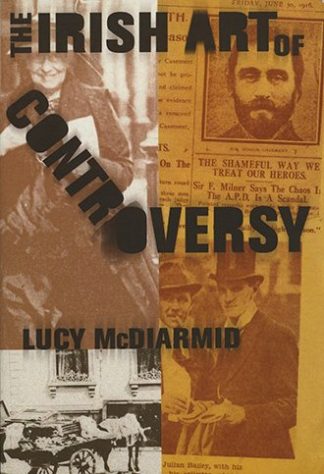
Lilliput Press –
“Here is the perfect book for anyone who likes cultural history, politics, or Ireland. I couldn’t put it down; it is lots of fun to read-scholarly but very accessible, written with humor and grace. If you want a lively, detailed account of the intellectual and cultural brawls taking place in Ireland at the turn of the 20th century, this is THE book.” A.N OAKES
Lilliput Press –
“I’ll read anything about George Bernard Shaw, so when I saw his name on the back cover of this book, I bought it, even though I’d never heard of the incident it mentioned. I wound up enjoying EVERY chapter — it was like going back to an earlier time and meeting all the most colorful people in a small, tightly knit community. Life at the turn of the 19th century into the 20th century seems to surround you as you read. This is a fascinating book for anyone who enjoys experiencing the rich texture of another era, described with humor and sympathy.” NANCY PEPPER
Lilliput Press –
“I enjoyed Lucy McDiarmid’s The Irish Art of Controversy on many levels. It helps me get into the spirit of several of W B Yeats’s poems and, more importantly, reminds us all of the value of understanding our pervasive controversies. It is very educational to see how they operate over time. She’s done us all a wonderful service through her lucid explanations of key controversies present in Ireland’s successful struggle to achieve a national identity. If you are interested in Yeats, Ireland, or controversy this book is a must.” DOUGLAS SAUM
Lilliput Press –
“The Irish Art of Controversy provides a wonderfully vivid look at the intimacies of Irish politics by Lucy McDiarmid. With her usual wit and fastidious scholarship, she explains how public controversy determined what it meant to be Irish in the early 20th century. She evokes an extraordinary series of dramas played out by opposing factions on such issues as religion, sex, class values, the labor movement, censorship and civil rights. Issues that shaped the coming revollution and the nature of Irish government. In contrast to the romantic concept of recovering the poor old woman’s four green fields, McDiarmid demonstrates how hotly contested was the question of what should be planted in those fields.
During the strike of some 25,000 Dublin workers in l9l3, for exxample, a violent tug of war developed between Catholic clergy and labor sympathizers attempting to place starving children temporarily in the homes of English workers. The clergy largely defeated this plan by accusing Irish mothers of endangering the faith of their children by allowing them to be “kidnapped” by English Protestants, socialists and feminists. Archbishop Walsh proclaimed that “the Irish people would rather their children perish by the ditches than that they should be exposed to the risk of being perverted in their religion.” Under such pressure, it is not surprising that of some 300 children initially enrolled, only 18 reached England. This episode reveals the unfortunate bigotry of the clergy, but also identifies cultural memories and beliefs (souperism, fairy abduction) that subconsciously, or otherwise, intensified the fears of Catholic parents.
An equally fierce and lasting controversy emerged over Roger Casement. On trial for treason in the aftermath of the l9l6 Rising, he was fatally compromised by discovery of the so-called Black Diaries containing graphic descriptions of homoerotic encounters. Both Irish and English opinion turned against him despite his patriotism and the humanitarian work for which he had been knighted. Casement was hanged, and his remains were not returned to Ireland until 1965. Even then, there was consideraable uneasiness about enshrining a gay man in the pantheon of Irish heroes. With the growing secularization of Ireland, however, Casement became a pivotal figure in open debate about sexualities and civil rights. In fact, as McDiarmid demonstrates, it was the transgressive example of Casement that allowed such debate to be made public.
In sum, an excellent book. A pleasure to read.”
Lilliput Press –
“A pleasure to read a book that, as with the original disputants who comprise the subjects of the five chapters, addresses the general public in clear, spirited, and engaging fashion. While the content’s aimed at an academic reader, the prose flows more smoothly, and the author remains aware of the need for a personal perspective that keeps her in control of the mass of material she sifts through and organizes in support of the often dramatic, if self-consciously so, performers on the stages and streets of Dublin almost a century ago. Rather than (and Prof. McD acknowledges in her preface that she labored not to use “ludic”) become embroiled in abstruse jargon and faddish theory, McDiarmid takes on the early debates that characterized cultural nationalist contentions that served as a synecdoche for the larger issues of Irish Ireland.
These are covered in five thematic sections about public spats and private correspondence, and these do overlap slightly: Hugh Lane’s bequeathed 39 paintings, Shaw’s “The Shewing of Blanco Posnet” with Lady Gregory & GBS for the Abbey Theatre squaring off against Dublin Castle, Fr. O’Hickey’s defense of compulsory Irish, the “Dublin kiddies” vs. the socialists and philanthropists, and the “afterlife” which Roger Casement’s diaries with their homosexual content represented for later 20c Irish discussion of sexuality and rebellion. Unlike later spectacles that entered the Irish arena, these riled up not only academics and writers, but the common people. It’s a telling sign of the retreat from the “agora” in the past century that shows how willing many people are to leave to the intellectuals and literati what once might have been the dispute of many a dinner table– think of the contention over Parnell in Joyce’s “Portrait.”
The details of the book have been previewed on this site and by earlier respondents. Many illustrations, endnotes, and explanations carry along the text in more brisk fashion than one might expect from a professor. I might add that the notes document generously the assistance from many who assisted McDiarmid in her years of research. The book may betray a bit of the assembly from disparate pieces that many collections do when gathered from earlier talks and articles, but the introduction and conclusion tie together the threads efficiently. There’s even a well-chosen Irish-language proverb that begins each chapter cleverly. Such details show the author’s own personality in a study that abounds in spirited, strong-willed, and stubborn smart meetings and maulings of the minds.” JOHN MURPHY